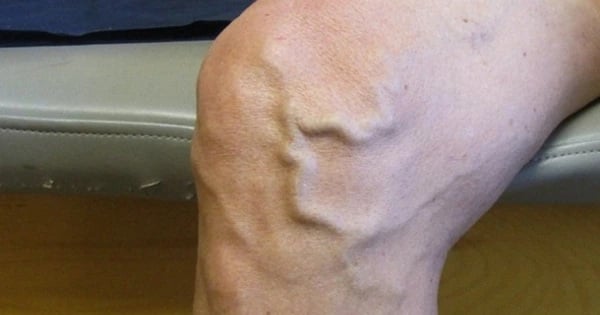The Appearance of Veins on the Body
The appearance of veins on the body is due to superficial veins located close to the skin’s surface. These veins play a crucial role in transporting blood from various organs back to the heart. The blood within these veins appears bluish-purple when viewed from the surface, hence the term “blue veins.”

Venous insufficiency is common in the legs, affecting about 10 – 35% of adults.
In modern medicine, these veins are typically considered normal and are not indicative of a serious health issue. While they may be more visible in some individuals, it is important to note that everyone has these veins, and their presence does not warrant concern.
Are Prominent Veins a Cause for Concern?
Modern medicine views veins as a non-pathological condition, reflecting the function of blood vessels. However, the appearance of veins, especially if they become swollen, deformed, or lose color in the following three areas, should be noted with caution.
Worm-like Veins on the Legs
Prolonged sitting or standing can increase venous pressure in the legs, causing the vein walls to dilate and resulting in bluish veins that resemble earthworms. This condition, known as chronic venous insufficiency of the lower extremities, may also be accompanied by swelling and pain. If left untreated, it can lead to phlebitis, scleroderma, or venous thrombosis.

Worm-like Veins on the Legs
Swollen and Thick Abdominal Veins
When cirrhosis or a malignant tumor compresses the abdominal organs, the abdominal veins become obstructed. This obstruction causes the superficial veins in the abdomen to swell, resulting in thick and straight bluish veins.
It is rare for individuals to have prominent abdominal veins, and if they do appear, it warrants attention. Regular blood tests, liver function tests, ultrasounds, and other examinations are recommended to identify the root cause and prescribe appropriate medication.
Thick Neck Veins
The appearance of thick and uneven veins on the neck may indicate “goiter venous dilatation.” This condition is often associated with decreased right atrial function, which impairs the adequate return of blood through the veins, leading to congestion in the neck area.
If left untreated, this condition could lead to serious cardiovascular events such as myocardial infarction. Therefore, in addition to rest and a calm state of mind, it is essential to undergo the following examinations as soon as possible: blood tests, electrocardiograms, CT scans, and cardiac ultrasounds.
The presence of prominent veins in the hands and feet is relatively common, and if your overall health remains normal and robust, there is no cause for alarm. However, if the appearance of these veins is accompanied by symptoms of injury or venous inflammation, it is advisable to seek medical attention for a proper diagnosis.

































